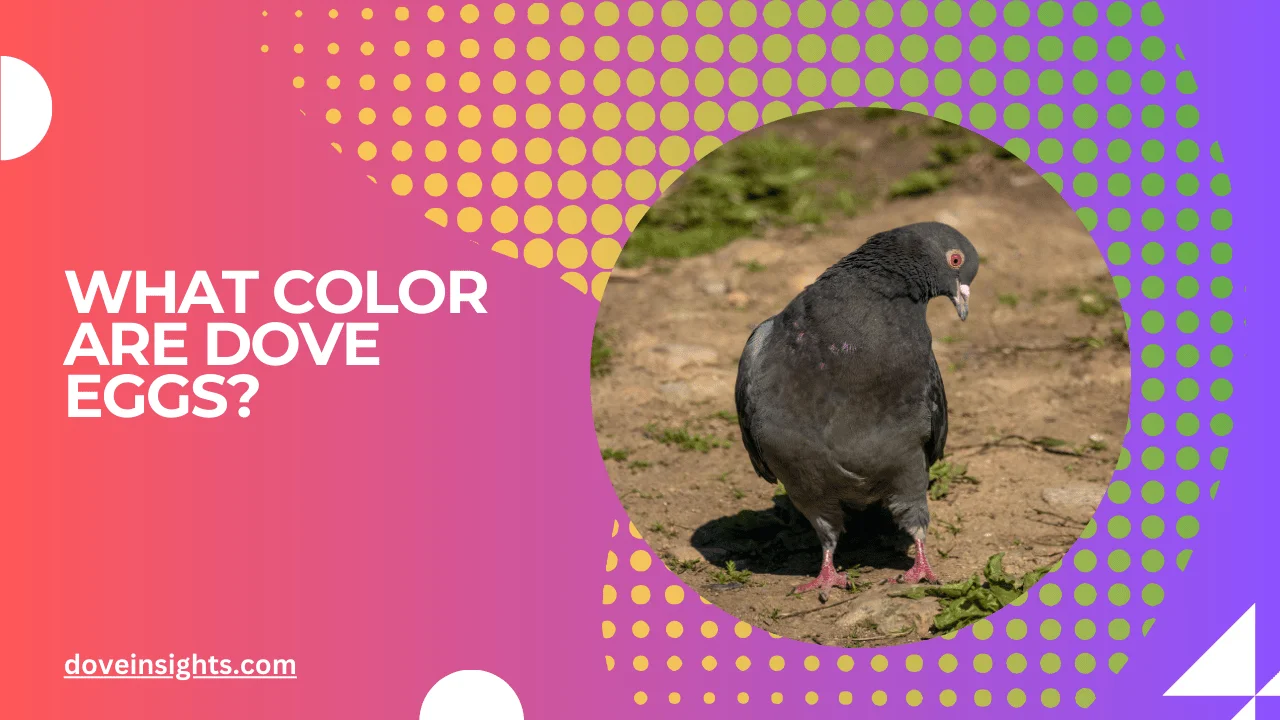Nestled delicately in their nests, dove eggs are among the most fascinating sights for bird enthusiasts.
These fragile, oval treasures hold the promise of life, symbolizing renewal and nature’s cycle. But have you ever paused to wonder: what color are dove eggs? This question opens a door to deeper insights into dove behavior, nesting habits, and their role in the environment.
Understanding the characteristics of dove eggs is more than just a detail for birdwatchers. It helps in identifying dove nests, distinguishing them from those of other birds, and even recognizing signs of healthy reproduction.
For those who share their gardens or backyards with these gentle birds, learning about dove eggs can enrich the bond with these winged visitors.
In this article, we’ll explore the appearance, purpose, and importance of dove eggs. From their color and texture to the broader ecological role they play, this guide is a comprehensive dive into the world of dove reproduction.
Whether you’re a seasoned bird lover or a curious observer, this journey into the life of doves will leave you with a deeper appreciation for these remarkable birds.
Contents
The Color and Appearance of Dove Eggs
White and Smooth: The most distinct characteristic of dove eggs is their pure white color. Unlike speckled or colored eggs seen in many other bird species, dove eggs stand out with their simplicity.
Oval Shape: Dove eggs are oval-shaped, slightly elongated, and typically measure around 2 to 3 centimeters in length, making them easy to identify.
Fragility: Their smooth, glossy shells may look sturdy, but they are incredibly fragile, requiring a well-protected nest to avoid breakage.
Why Are Dove Eggs White?
Camouflage in Nests: While white eggs might seem like they would stand out, doves often nest in locations where the eggs are hidden from predators, such as dense foliage or man-made structures.
Evolutionary Advantage: The white coloration of dove eggs reflects their evolutionary adaptation to environments where external camouflage isn’t as critical due to well-concealed nesting sites.
Parental Care: Doves are attentive parents, often incubating their eggs almost constantly, reducing the need for additional camouflage.
Dove Egg-Laying and Nesting Habits
Small Clutches: Doves typically lay two eggs per clutch, a practice that balances reproductive success and parental care.
Nest Locations: Doves favor elevated and safe spaces, such as tree branches, building ledges, and even flowerpots, ensuring their eggs remain undisturbed.
Incubation Period: Both male and female doves take turns incubating the eggs for about 14 days, showcasing their cooperative parenting style.
How to Identify Dove Nests and Eggs
Minimalistic Nests: Dove nests are often simple platforms of twigs and grass, appearing sparse compared to the intricate nests of other birds.
Egg Characteristics: The smooth, white eggs are unmistakable and can be distinguished from speckled eggs of other species like robins or sparrows.
Observational Tips: To identify dove nests and eggs, look for low-key nesting behavior in sheltered spots, often accompanied by the soft coos of mourning doves.
Conservation and Respect for Dove Eggs

Protecting Nests: As ground-nesting or tree-nesting birds, doves face threats from predators and human disturbances. Ensuring a safe environment is key to their survival.
Legal Protections: Dove eggs are protected under laws like the Migratory Bird Treaty Act, which prohibits harming nests or eggs without permits.
Ethical Birdwatching: Observers should maintain a respectful distance from nests, using binoculars or cameras to avoid causing stress to the birds.
Conclusion
Recap of Key Points: Dove eggs are white, smooth, and oval-shaped, reflecting their adaptation to well-concealed nesting environments. Their unique characteristics make them easy to identify and highlight the role of doves as dedicated parents. The color and fragility of these eggs speak volumes about the evolution and behavior of doves in their habitats.
Final Thoughts: Appreciating dove eggs goes beyond their physical appearance. It reminds us of the delicate balance of life and the need to protect these gentle creatures. Whether through backyard birdwatching or participating in conservation efforts, everyone can play a part in supporting dove populations and ensuring their eggs continue to symbolize the beauty of renewal in nature.
FAQ’s
What color are dove eggs?
Dove eggs are pure white, smooth, and oval-shaped.
How many eggs do doves lay at a time?
Doves typically lay two eggs per clutch.
How long does it take for dove eggs to hatch?
Dove eggs generally hatch after an incubation period of 14 days.
Where do doves lay their eggs?
Doves build their nests in elevated, concealed locations, such as trees, ledges, or even in human-made structures.
Why are dove eggs white and not speckled?
The white coloration reflects their adaptation to well-hidden nests, reducing the need for camouflage.
Are dove eggs fragile?
Yes, dove eggs are delicate and require careful handling and safe nesting sites.








